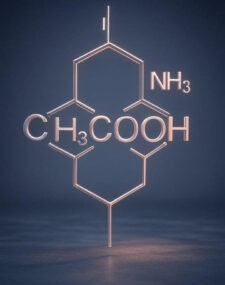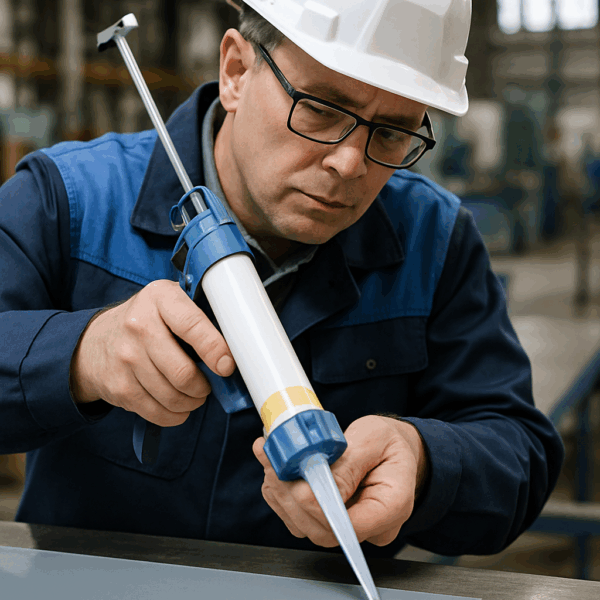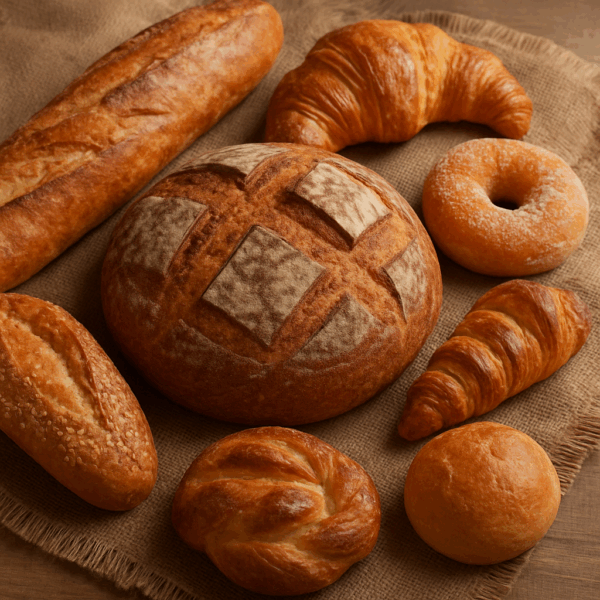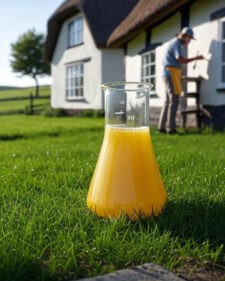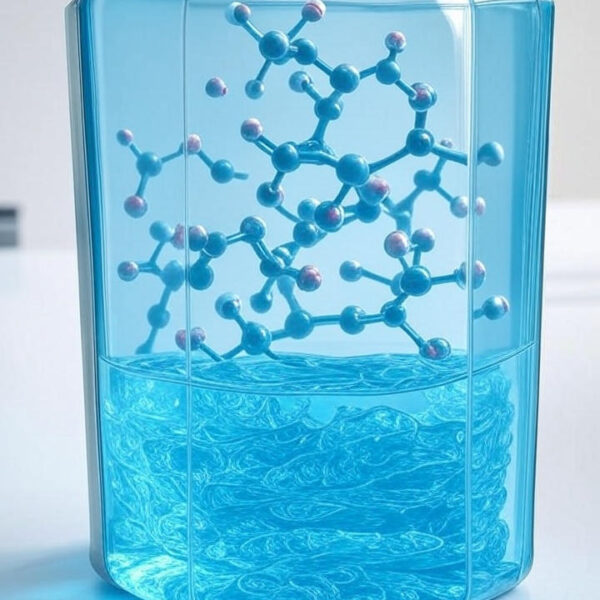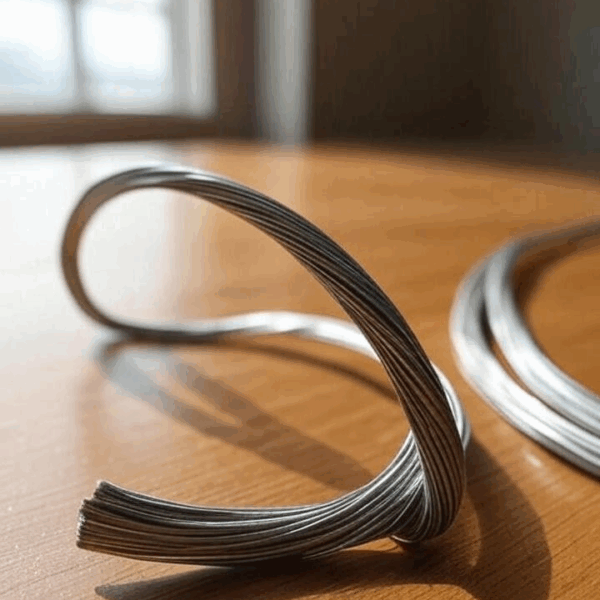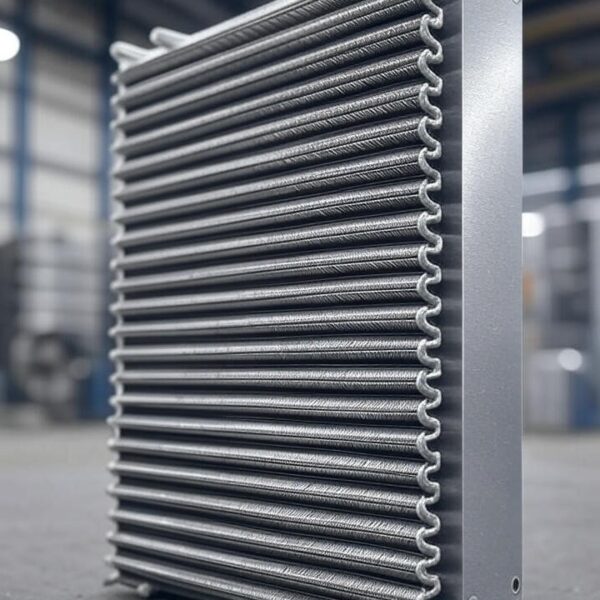A
Acetic Acid
Acetic acid systematically named ethanoic acid, is an acidic, colorless liquid and organic compound with the chemical formula CH3COOH.
Acetic acid is a simple monocarboxylic acid containing two carbons and it is a product of the oxidation of ethanol and of the destructive distillation of wood.
Acetic acid is used as raw material and solvent in the production of acetic anhydride, cellulose acetate, vinyl acetate monomer, acetic esters, chloracetic acid, plastics, dyes, insecticides, photographic chemicals, and rubber. Other commercial uses include the manufacture of vitamins, antibiotics, hormones, and organic chemicals, and as a food additive (acidulant).
Acrylic Adhesives And Sealants
Acrylic adhesives are available in different forms to suit specific applications:
- Solvent-Based Acrylic Adhesives: These are dissolved in a solvent, offering excellent bonding for porous and non-porous materials.
- Water-Based Acrylic Adhesives: Environmentally friendly and safer to use, these adhesives are ideal for lightweight materials.
- Structural Acrylic Adhesives: Known for their high strength, they are commonly used in load-bearing applications.
- Pressure-Sensitive Adhesives (PSAs): These allow for bonding with minimal effort, perfect for tapes and labels.
Acrylic Sealant are Cheap and Widely Available, Easy to Paint Over , Fast Cure and Have very good adhesion that makes it an ideal option for areas that require a quick and strong bond.
Acrylonitrile Butadiene Styrene Copolymer
Diverse Varieties of ABS are available since ABS is a copolymer of acrylonitrile, butadiene, and styrene .Acrylonitrile contributes strength, chemical resistance, and thermal stability, while butadiene enhances toughness and impact resistance. Styrene imparts high gloss, easy coloring, and smooth processing. So varying the monomer ratios yields ABS with diverse physical properties, catering to specific application needs. Furthermore, incorporating additives like glass fibers bolsters strength, while flame retardants enhance fire resistance.
Based on the level of impact resistance, ABS can be classified into three categories of High Impact ABS , Medium Impact ABS, Low Impact ABS
Active Yeast
Yeast is made with a living organism called Saccharomyces cerevisiae. This organism feeds on sugars in the dough and promotes the fermentation of the dough and converts the sugar and starch into alcohol and carbon dioxide. Then, with the help of oxygen in the moist ingredients, the carbon dioxide gas is trapped within the dough and this causes it to form bubbles. These bubbles make the bread rise.
Active yeast is a form of dry yeast in which the yeasts are not killed but made dormant through dehydration, and return to becoming active again when mixed with a warm liquid such as water or milk known as proofing
Alkyd Resins – Long Oil
The term alkyd is a modification of the original name “alcid”, reflecting the fact that they are derived from alcohol and organic acids.
Long oil alkyd resins are those that have an oil content greater than (55%)60%, something that helps give a smooth brushing action. Long oil alkyd resins are soluble in aliphatic type solvents (white spirit) and are mainly used in:
- Interior & exterior house paints
- High gloss paints
- Varnish & floor sealers
- Anticorrosive paints etc.
A long oil alkyd can be applied to wood surfaces for protection and to metal surfaces for corrosion prevention. It does this by acting as a film forming agent due to its polyester component.
Alkyd Resins – Medium Oil
A medium oil alkyd resin is a alkyd binder made with a medium oil to alkyd resin ratio. These resins contain between 40 and 60 percent oil as a modifying agent.
These oil alkyd resins takes less time to dry when compared to long oil alkyd resins. An aliphatic solvent system is considered an ideal solvent system for such type of oil alkyd resins, which means that these resins are completely soluble in aliphatic solvents.
They have an excellent gloss level, offer excellent hardness, surface, and gloss retention. They are soluble in both aliphatic type solvents (white spirit) and more strong solvents like xylene or toluene.
Key Features of Medium Oil Alkyds Resin are Non-yellowing , Dry quickly , Enhance transparency of oil colors and they are Non-toxic
Alkyd Resins – Short Oil
The term alkyd is a modification of the original name “alcid”, reflecting the fact that they are derived from alcohol and organic acids.
A short oil alkyd resin is an alkyd binder made with a short oil to alkyd resin ratio. The percentage of fatty acids in the short oil alkyd resins is less than 40 percent. These fatty acids act as the modifying agents in the resins.
The short oil alkyd resins are generally oven dried because they cannot be air dried. Typical solvent systems for these products are the alipahtic solvents. Some may be cut in aromatics or oxygenated solvents for high solids. Most will accept infinite dilution with aliphatic solvents.
The main characteristic is the excellent drying time.
Alkyl Benzene Sulfonate ABS
of anionic detergents. Alkyl benzene sulfonates have two types depending on their chain structures: branched and linear chain. In the detergent industry, liner ABS is preferred because it is more biodegradable than LAS.
Alkylbenzene sulfonates are a class of anionic surfactants, consisting of a hydrophilic sulfonate head-group and a hydrophobic alkylbenzene tail-group. Along with sodium laureth sulfate, they are one of the oldest and most widely used synthetic detergents and may be found in numerous personal-care products (soaps, shampoos, toothpaste etc.) and household-care products (laundry detergent, dishwashing liquid, spray cleaner etc.
Aluminum Alloy 1050
The alloys are classified and named according to the amount and type of the alloying metals . Given widespread applications across industries, selecting the right aluminum alloy type for a specific end-use is crucial. Just slight differences in chemical properties can drastically alter strength, workability, corrosion resistance, and electrical conductivity of the alloy.
The purity of Aluminum 1050 is 99.50% and the remaining 0.5% is made up of mostly iron and silicon.
It is a popular grade of aluminum for general sheet metal work where moderate strength is required. 1050 is a soft aluminum alloy that offers good electrical and thermal conductivity, as well as good general corrosion resistance.
Aluminum Alloy 1060
The alloys are classified and named according to the amount and type of the alloying metals . Given widespread applications across industries, selecting the right aluminum alloy type for a specific end-use is crucial. Just slight differences in chemical properties can drastically alter strength, workability, corrosion resistance, and electrical conductivity of the alloy.
The purity of Aluminum 1060 is 99.60% and has very good corrosion resistance and excellent welding characteristics and formability
The density of this alloy is about 2.7g/cm3 .can be annealed at 343°C (650°F) and then cooled in air. It has excellent cold working characteristics and conventional methods are used to readily cold work this alloy. As a wrought alloy, it is typically formed by extrusion or rolling.
Aluminum Alloy 1070
The alloys are classified and named according to the amount and type of the alloying metals . Given widespread applications across industries, selecting the right aluminum alloy type for a specific end-use is crucial. Just slight differences in chemical properties can drastically alter strength, workability, corrosion resistance, and electrical conductivity of the alloy.
1070 is a pure aluminum alloy. It is a wrought alloy, with the purty of 99.70% and high corrosion resistance and an excellent brazing ability.
1070 Aluminum alloy has aluminum 99.70%, iron, silicon, zinc, vanadium, copper, titanium, magnesium, and manganese as minor elements . its density is about 2.70 g/cm3
Aluminum Alloy 1100
The alloys are classified and named according to the amount and type of the alloying metals . Given widespread applications across industries, selecting the right aluminum alloy type for a specific end-use is crucial. Just slight differences in chemical properties can drastically alter strength, workability, corrosion resistance, and electrical conductivity of the alloy.
Aluminum Alloy 1100 With a purity of 99.0% and is often called commercially pure aluminum. It is the softest of the common alloys.
Aluminum Alloy 1100 is non-heat treatable, extremely malleable and shows excellent corrosive resistance. Though 1100 aluminum has great weldability, it also has a rather narrow melting range to consider. It has good machinability when hard tempered.

